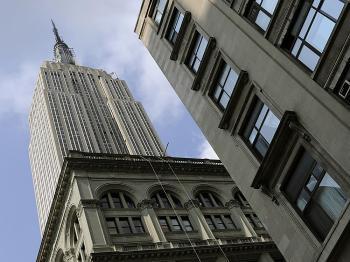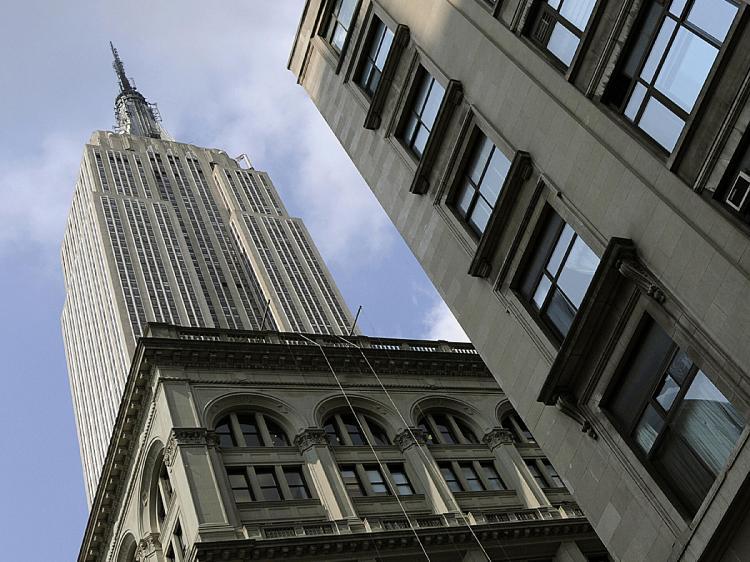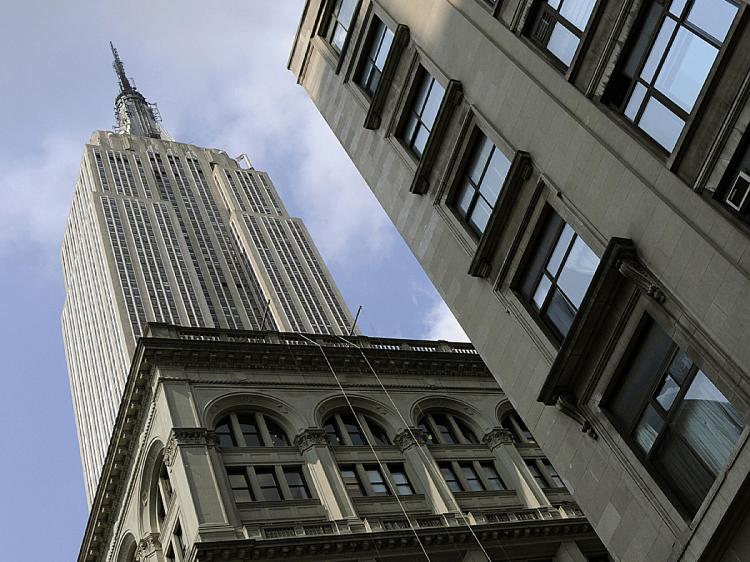The big green wave hit the real estate industry as the Obama administration’s stimulus plan introduced incentives for weatherizing houses and tax credits for retrofitting buildings.
Green retrofitting is on the rise and America’s old buildings are set to become the biggest attraction for the building industry in the next five years, according to a report by McGraw-Hill Construction.
Today we have 400 times more electric light in our buildings than we did a century ago and our eyes are not 400 times worse, said Kevin Kampschroer, acting director of the Office of Federal High-Performance Green Buildings of the U.S. General Services Administration (GSA).
Green building comprises 5 to 9 percent of the retrofitting and renovation market activity today, the McGraw-Hill report states. This number is projected to grow to 20 to 30 percent in five years—meaning major retrofits costing more than over $1 million are expected to reach between $10 billion and $15 billion by 2014.
“With 76.9 billion square feet of existing building stock and a number of inefficient buildings, green building has a tremendous long-term opportunity to dramatically reduce U.S. energy consumption and greenhouse gas emissions,” the report stated.
This stock includes some extremely inefficient buildings, particularly those constructed after 1970, which make up 60 percent.
“Nearly 80 percent of owners and tenants most often cite improved health and well-being of building occupants/employees as their top social motivator for going green in retrofit and renovation projects,” the report states.
The biggest impact on buildings in New York is the Greater, Greener Buildings plan that was introduced in April this year.
The plan means buildings will be required to meet the energy code whenever renovations are made—currently, there is a loophole that allows minor renovations to skirt the code. Lighting in commercial buildings of 50,000 sq. ft. or more will have to be upgraded to more energy-efficient systems that pay for themselves through energy savings. Such large buildings will have to undergo an energy audit every 10 years and make any improvements that could pay for themselves within five years’ time.
The Empire State Building is the biggest New York icon to undergo an internal facelift. A package of eight recommended projects will together reduce the office tower’s energy use by 38 percent, lower its annual energy cost by $4.4 million, and decrease its carbon emissions by 105 metric tons.
The installations will include insulation and lighting, triple-glazing all of the building’s 6,500 windows so that they block heat-inducing sunlight, and putting in place a Web-based monitoring system that allows tenants to take tally of their own energy consumption.
Of the $5.55 billion in federal stimulus funding earmarked for the GSA, $4.5 billion is going toward existing buildings. So far, 43 projects have been selected. One, a federal building in Portland, Oregon, was built in 1975 and has never been upgraded. The building will get $133 million of the stimulus money to give it a full “green” overhaul.
Green retrofitting is on the rise and America’s old buildings are set to become the biggest attraction for the building industry in the next five years, according to a report by McGraw-Hill Construction.
Today we have 400 times more electric light in our buildings than we did a century ago and our eyes are not 400 times worse, said Kevin Kampschroer, acting director of the Office of Federal High-Performance Green Buildings of the U.S. General Services Administration (GSA).
Green building comprises 5 to 9 percent of the retrofitting and renovation market activity today, the McGraw-Hill report states. This number is projected to grow to 20 to 30 percent in five years—meaning major retrofits costing more than over $1 million are expected to reach between $10 billion and $15 billion by 2014.
“With 76.9 billion square feet of existing building stock and a number of inefficient buildings, green building has a tremendous long-term opportunity to dramatically reduce U.S. energy consumption and greenhouse gas emissions,” the report stated.
This stock includes some extremely inefficient buildings, particularly those constructed after 1970, which make up 60 percent.
“Nearly 80 percent of owners and tenants most often cite improved health and well-being of building occupants/employees as their top social motivator for going green in retrofit and renovation projects,” the report states.
The biggest impact on buildings in New York is the Greater, Greener Buildings plan that was introduced in April this year.
The plan means buildings will be required to meet the energy code whenever renovations are made—currently, there is a loophole that allows minor renovations to skirt the code. Lighting in commercial buildings of 50,000 sq. ft. or more will have to be upgraded to more energy-efficient systems that pay for themselves through energy savings. Such large buildings will have to undergo an energy audit every 10 years and make any improvements that could pay for themselves within five years’ time.
The Empire State Building is the biggest New York icon to undergo an internal facelift. A package of eight recommended projects will together reduce the office tower’s energy use by 38 percent, lower its annual energy cost by $4.4 million, and decrease its carbon emissions by 105 metric tons.
The installations will include insulation and lighting, triple-glazing all of the building’s 6,500 windows so that they block heat-inducing sunlight, and putting in place a Web-based monitoring system that allows tenants to take tally of their own energy consumption.
Of the $5.55 billion in federal stimulus funding earmarked for the GSA, $4.5 billion is going toward existing buildings. So far, 43 projects have been selected. One, a federal building in Portland, Oregon, was built in 1975 and has never been upgraded. The building will get $133 million of the stimulus money to give it a full “green” overhaul.








Friends Read Free